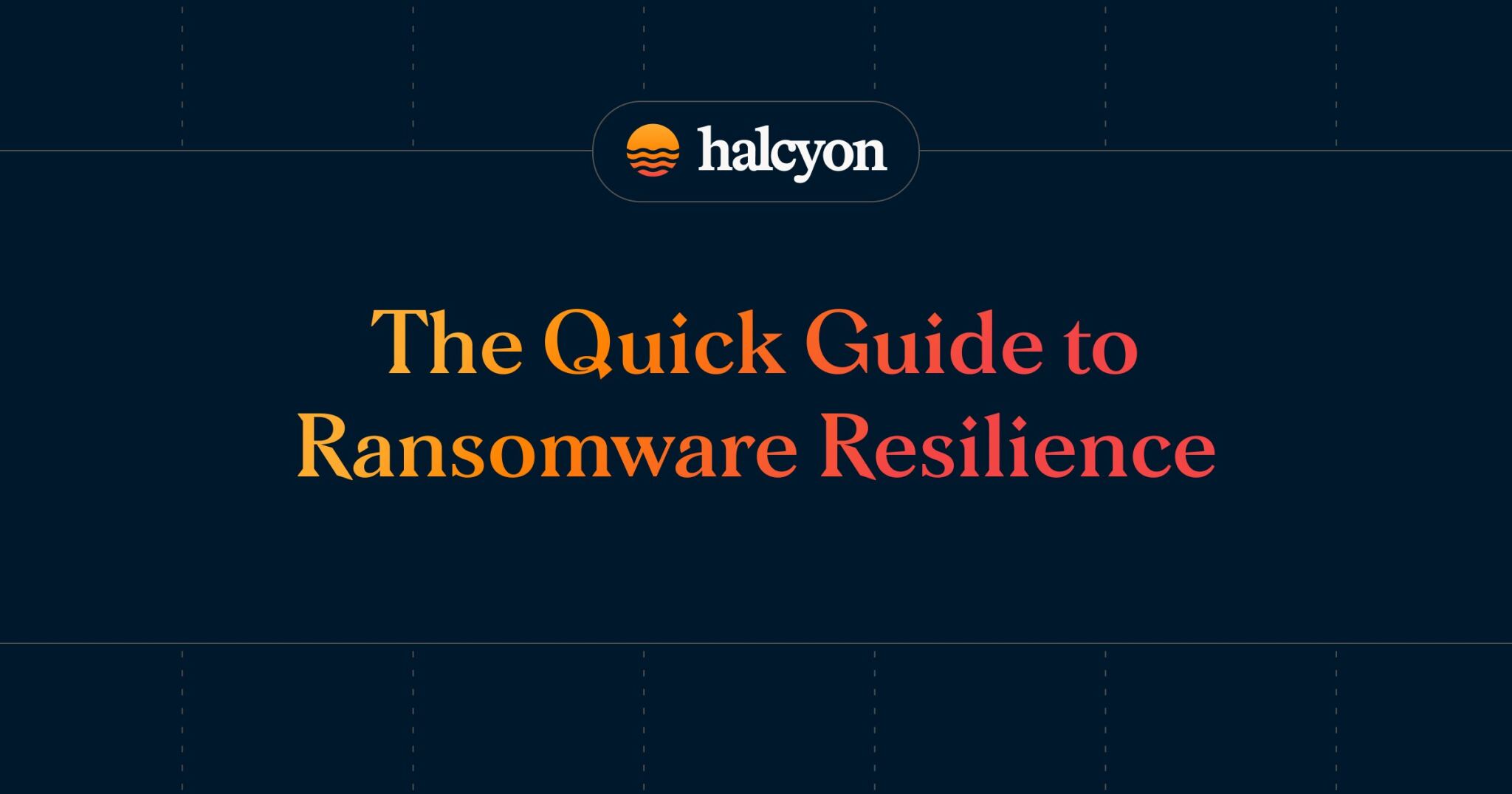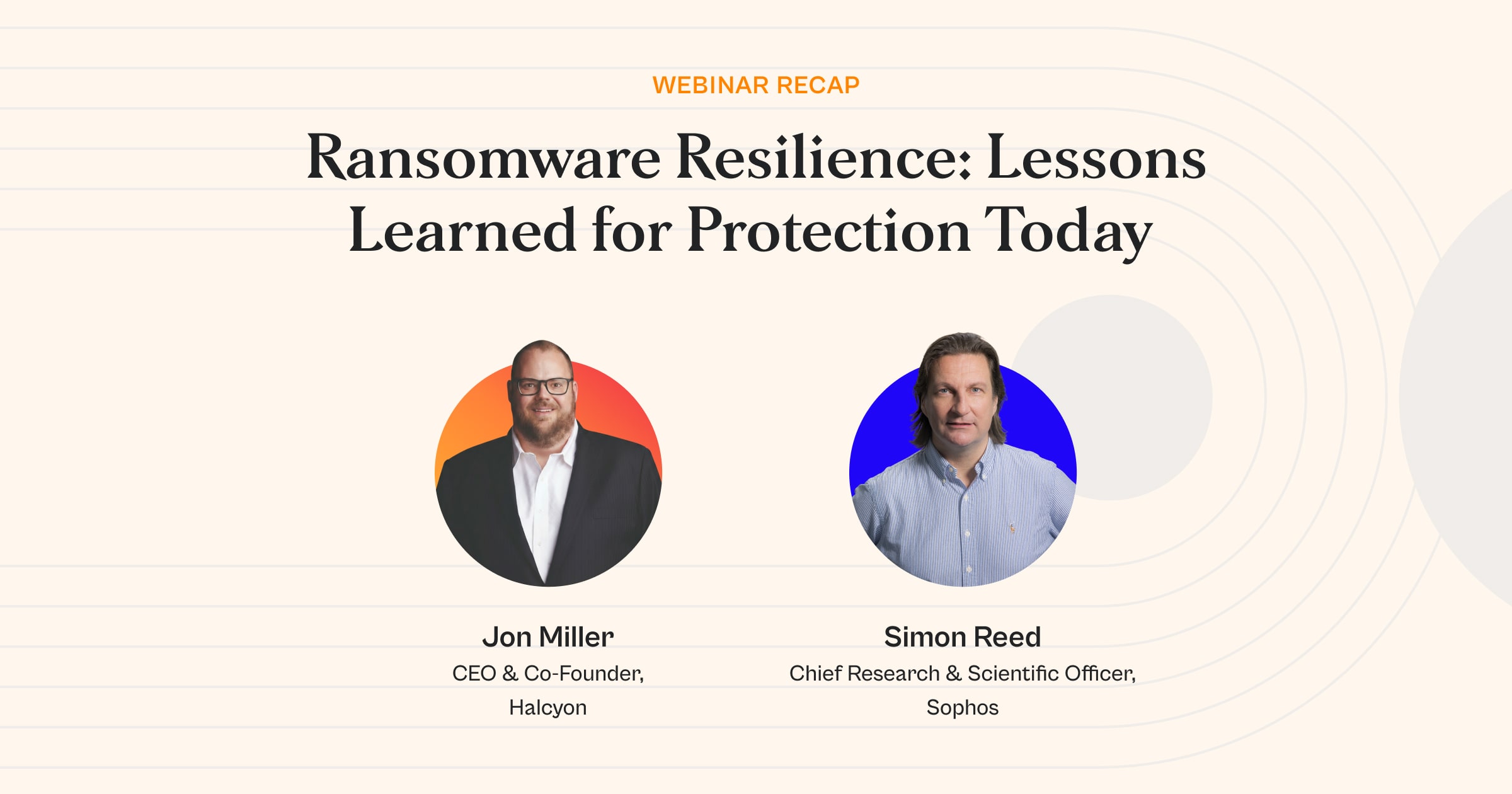CSMA + Enterprise Resilience Platform: A Cybersecurity Powerhouse

A Cybersecurity Mesh Architecture (CSMA) is a security framework that enables organizations to connect and protect their assets and services in a distributed and dynamic environment. Think of it as a giant safety net that catches anything and everything that falls through the cracks in your organization's security defenses.
The term "mesh" refers to the way that CSMA connects various security solutions and services together, creating a flexible and dynamic network of protections that can adapt to changing threats and environments. It's like a spiderweb, but instead of catching flies, it catches cybercriminals.
Flexibility, Scalability and Adaptability
The idea of CSMA is not new, but the term itself was coined by Gartner in 2020 to describe a new approach to cybersecurity that emphasizes flexibility, scalability, and adaptability. In the past, organizations have relied on rigid security frameworks that were focused on securing the perimeter of their networks.
But with the rise of cloud computing, mobile devices, and other distributed technologies, the perimeter has become increasingly porous, making traditional security frameworks less effective. That's where CSMA comes in.
By creating a flexible and dynamic network of security solutions and services, organizations can protect their assets and services no matter where they are located or how they are accessed. It's like building a web of protection that surrounds your organization, rather than trying to build a fortress around it.
To sum it up, a Cybersecurity Mesh Architecture is like a giant spiderweb of security protections that catches anything and everything that falls through the cracks in your organization's security defenses. It's a new approach to cybersecurity that emphasizes flexibility, scalability, and adaptability, and enables organizations to protect their assets and services in a distributed and dynamic environment.
Building an Enterprise Resilience Platform
An Enterprise Resilience Platform is a security solution that provides real-time threat detection and response, access control mechanisms, resilience and recovery capabilities, and other security features that enable organizations to prevent disruptions to operations in the face of security threats. The Enterprise Resilience Platform is like a shield that protects organizations from cyber threats and enables them to quickly recover from security incidents.
The idea of enterprise resilience has been around for a while, but the term itself gained popularity in the wake of the COVID-19 pandemic, which highlighted the importance of business continuity and disaster recovery. An Enterprise Resilience Platform enables organizations to maintain their operations in the face of security threats, natural disasters, and other disruptions, ensuring that they can continue to serve their customers and meet their business objectives.
The platform provides real-time threat detection and response capabilities, enabling organizations to quickly identify and mitigate security incidents. It also provides access control mechanisms, ensuring that only authorized users can access critical systems and data. And it offers resilience and recovery capabilities, allowing organizations to quickly recover from security incidents and other disruptions.
In addition to these capabilities, an Enterprise Resilience Platform can integrate with other security solutions and services, such as SIEM, EDR, SDP, and ZTNA solutions, enabling organizations to achieve a more comprehensive and adaptive security posture. By integrating with other security solutions and services, the platform can provide additional layers of protection and enhance an organization's ability to detect and respond to security incidents.
An Enterprise Resilience Platform provides real-time threat detection and response capabilities, access control mechanisms, and resilience and recovery capabilities, as well as integration with other security solutions and services to enhance an organization's security posture.
CSMA + Enterprise Resilience Platform
Combining an Enterprise Resilience Platform with a Cybersecurity Mesh Architecture (CSMA) can work together to provide a comprehensive and adaptive security posture that enables organizations to protect their assets and services in a distributed and dynamic environment.
The Enterprise Resilience Platform provides a centralized platform for managing security operations and collecting and analyzing security events from across an organization's systems and networks. It offers real-time threat detection and response capabilities, access control mechanisms, and resilience and recovery capabilities that can help organizations to quickly detect and respond to security incidents and understand their context.
On the other hand, CSMA provides a flexible and dynamic network of security solutions and services that can adapt to changing threats and environments. It enables the sharing of information and the orchestration of security operations across multiple devices and environments, which can improve an organization's ability to detect and respond to security incidents in a coordinated and timely manner.
By integrating an Enterprise Resilience Platform with CSMA, organizations can achieve a more proactive and adaptive security posture that can better protect their critical assets and data from cyber threats. The Enterprise Resilience Platform can provide centralized management and real-time threat detection and response capabilities, while CSMA can provide a flexible and dynamic network of security solutions and services.
For example, the Enterprise Resilience Platform can collect security events and alerts from across an organization's systems and networks, and feed that data into CSMA for analysis and correlation. The CSMA can then use that data to identify potential threats and take proactive measures to mitigate those threats before they are exploited by cybercriminals.
In addition, the CSMA can enable the sharing of information and the orchestration of security operations across multiple devices and environments, improving an organization's ability to detect and respond to security incidents in a coordinated and timely manner.
Let's say an organization's employees start receiving phishing emails that contain a malicious link. Some employees click on the link, unknowingly downloading malware onto their computers. The Enterprise Resilience Platform detects this security event and collects the data from the affected systems. It then sends the data to CSMA for analysis and correlation.
CSMA uses its dynamic network of security solutions and services to analyze the data and identify the malware. For example, the data may be correlated with other security events from across the organization's systems and networks, with threat intelligence feeds, and with machine learning models to determine the characteristics of the malware and how it spreads.
CSMA then takes proactive measures to mitigate the threat. It may automatically isolate the affected systems or block the IP addresses associated with the malware. It can also alert the security team to investigate further and provide them with the necessary data to identify the scope of the attack and to take appropriate action.
CSMA can also use the data to improve future threat detection and response. For example, it may update the organization's security policies, train machine learning models, or provide recommendations to the security team on how to better protect against similar attacks.
Additionally, CSMA can enable the sharing of information and the orchestration of security operations across multiple devices and environments, improving an organization's ability to detect and respond to security incidents in a coordinated and timely manner.
Overall, integrating an Enterprise Resilience Platform with CSMA can provide organizations with a more comprehensive and adaptive security posture that can better protect their critical assets and data from cyber threats. By leveraging the strengths of both solutions, organizations can create a more proactive and adaptive security posture that can adapt to changing threats and environments.
Halcyon.ai is the industry’s first dedicated, adaptive security platform that combines multiple advanced proprietary prevention engines along with AI models focused specifically on stopping ransomware – talk to a Halcyon expert today to find out more. And check out the Recent Ransomware Attacks resource site to get near real-time tracking of ransomware attacks, threat actor groups and their victims.
Related Posts
See Halcyon in action
Interested in getting a demo?
Fill out the form to meet with a Halcyon Anti-Ransomware Expert!





